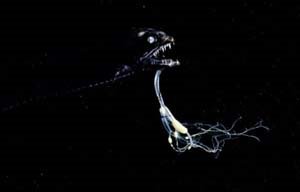For example, the poem “N” ends with the lines:
Time hip-hops the resent tenseThe soundplay here is so dense that it wants to take over from the attempt to parse meaning out of this. Additionally, there are multiple meanings, of “resent[ment]/recent/present,” something about the nature of time and verb-tense, then the various senses of “face” and “facing,” losing face versus “winning,” even an oblique gesture to the verbal jousting of hip-hop performance. Similarly, the poem “Ultras” has a “flash / like morning // flesh,” and then the imperative “Plough on black fur / till the broken / star turns and grows // a first dropping in think.” It’s the soundplay again that drives the poem — “flash/flesh,” the assonance of “fur/turns” and “broken/grows” — and which creates the illusion of a kind of symmetry. Only, we find that it doesn’t finally add up, and the summative phrase “dropping in think,” which suggest an idea, is deferred by the just-slightly-off-kilter syntax. But that is the point, that it graphs the mind’s attempts to make sense from the nuts and bolts of language that don’t necessarily compose a finished object.
With counter winds as walls
Face off flow, coasts lose face.
And, facing the head-on seas,
The lowly feel like winning.
Reading these poems is something like being in the midst of a dream, where we feel we’ve just about grasped something, only to find that it is vanishing right in front of us. One would be tempted to say that Goodby’s work creates its own dream-like world of the mind. Of course, as soon as one says “dream-like,” the immediate association is James Joyce’s Finnegans Wake, or even more likely surrealism. These poems do employ some of the strategies of surrealism — e.g. in images and metaphors such as “feathered crazy footage / Of statues, hydrants, the gas beach / Unleashed in spurts” (“Day in the New” vii) and “We distorted torsos of foam into sand, / Matter-energy of the insurgents of air” (“Surgical”). Here, on the surface at least, the methodology seems to correspond with André Breton’s. However, it is not so much a question of dragging the unconscious or illogical into the light of the conscious or logical, as it is of exposing the sand of logic itself as made of foam or air. But then, my analogy here assumes that sand is hard and concrete as opposed to the abstractness of foam or air — yet, sand is also metaphorically “shifting sand,” “castles made of sand,” etc. It is all matter-energy.
Like the protagonist of Jorge Luis Borges’s story “The Circular Ruins,” who seeks to dream into existence a man “with minute integrity,” Goodby dreams these poems onto the page only to reveal that we are all part of the dream, reader and poet alike. As he writes in “The Ars” (the title poem), at first “he cannot imagine yet / ripped space”; finally, however, “his dream inscrutably feeds / on itself wrings pain bodies dry.” The body “dry,” the table-soccer player of The Ars’s cover photo (taken by the author himself), a simulacrum, the seam of the mold visible from the crown of the head on down. As the concluding poem, “Llu” (meaning “power” in Welsh), reminds, “To happen is finished and about to.” That is, it is “finished” by fashioning hands, or in the case of the figure in the photo, not so finished; indeed, these poems are always about to be, but never quite, and in this manner, are.
























1 comment:
impressively incisive
Post a Comment